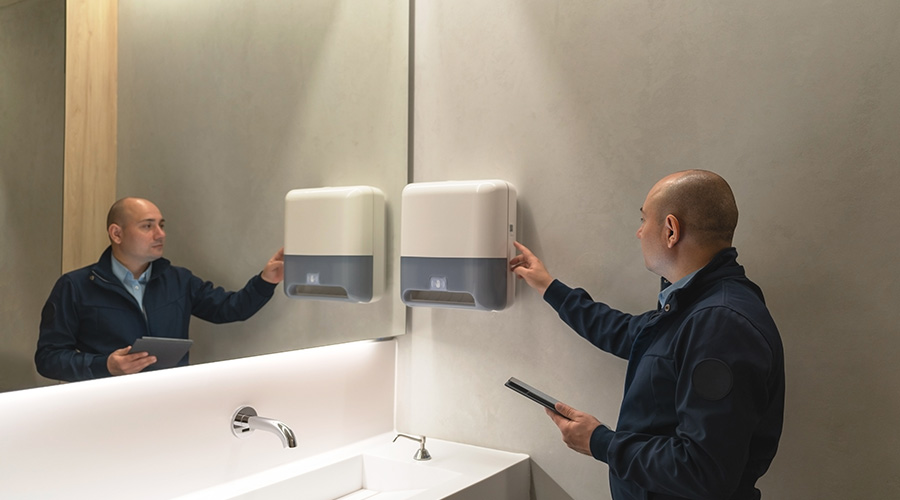Updated Plumbing Products Key for Saving Utility Costs, Water Use
Submetering savings can result from previously unidentified leaks that reveal themselves in an unusually high flow volume in a metered area. Once technicians measure baseline flow, they can take periodic readings and compare them to the baseline.
Technicians also can compare similar areas between buildings. If two areas in different buildings have about the same number of fixtures and usage, their flow rates should be similar.
Also, some buildings collect, treat and recycle sink water as grey water for use in toilets. This strategy can substantially reduce potable water use and flow into the sewer. The sewer flow is charged automatically based on the water supplied.
Showers also can be water wasters. Technicians usually can fix leaks by removing the head, taping the threads and replacing the head. If the head is pre-1992, its flow rate is probably 3-7 gallons per minute (gpm). It is possible to reduce the flow by 50 percent or more with a new 0.5, 1, or 1.5 gpm head. Managers should consider both the restricted flow rate and the angle of spray when selecting a new, low-flow solution.
Efficiency Benchmarks
Water-use calculators are useful aids in comparing one building with others in the same sector. Using the calculator is a three-step process.
First, collect use data for the facility's water bills and meters. Second, enter data into the calculator. Third, compare the data versus sector standards to identify savings. In addition to common water-use factors, they help to calculate such water savers as potential versus actual rainwater used based on annual rainfall, as well as potential versus actual grey water consumption.
One water-use-measurement firm uses the following benchmarks for daily use of potable water:
- education facilities — 0.43 gallons per person
- hotels — 7.1 gallons per room
- commercial office buildings — 0.64 gallons per person.
Managers can use individual fixture benchmarking to estimate savings through fixture upgrades. New faucet aerators should allow a maximum flow rate of 1.5 gpm at 60 psi and even lower flows at lower line pressure. Urinals should be 1 gpm. Water-use-rating systems based on green building standards also provide useful aids to determine where a facility ranks compared with similar facilities.
Water use-trends also allow managers to benchmark by comparing the current period of time with past periods. The two factors that control cost are the rate for water and sewage and the volume processed. Trending the rate, which is in dollars per thousand gallons, will show increases occurring fairly steadily, not in a straight line, but generally upward as utilities pay more for pumping and treatment and, subsequently, pass increases to customers.
To offset these inevitable cost increases, facilities can reduce volume. Charting volume trends by submetering will document efforts to conserve, show successes, and show where further potential exists. The bottom line is, track and conserve because conservation affects both the rate and the volume components of cost.
Related Topics:













